Alisha Arnold
Dr. Dr. Wessell Lightfoot
HIST 312
June 16, 2022
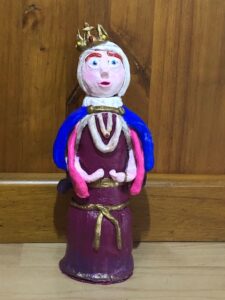


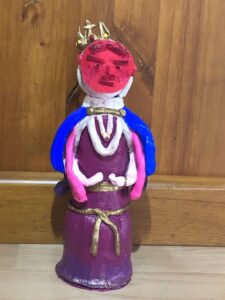
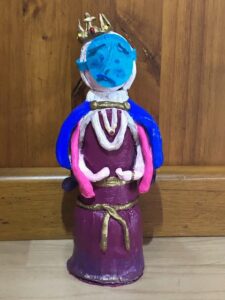
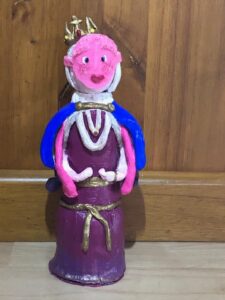
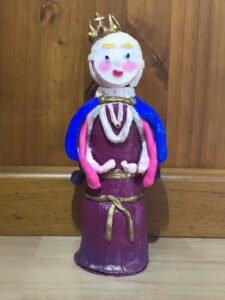
My final project centers around Queen Brunhilda of Austrasia, her history, and the various perceptions surrounding women, namely women in positions of power, within the sixth century. Born around 543, Brunhilda was the second daughter of Athanagild, Visigothic King of Hispania, and Goiswintha, Queen consort of Hispania and later Septimania. Brunhilda’s lengthy and complex political career would begin via her first marriage to King Sigebert I of Austrasia in 567, when she was in her early twenties. Brunhilda’s power and political drive is fascinating as it jumps between male influenced power, church/religion influenced power, and then her own, independent power. With that said, no matter the influence, it is still never-the-less power, something Brunhilda could utilize and weaponize in order to exert her control over her subjects, her kingdom (geographical area), her allies, or her enemies. Upon the death of Sigebert I, Brunhilda would participate in one more marriage, as well as three regencies (that would span three generations) until her brutal death in 613 at the hands of Clotaire II, Merovingian King of Neustria. Her death would abruptly end her reign as a Frankish Queen and grant Clotaire II solely reign over Francia. Brunhilda’s political prowess can be seen within her grace and femininity, as well as her ruthlessness and pride as she uses her relationships and bloodshed to garner support or action. It was my interest in these various perceptions of Brunhilda, and medieval women’s power in general, that influenced my final project.
For my final project I chose the artistic representation as I found the option very intriguing and anything that steps away from essay writing is a bonus in my book. With that said, I still wanted to challenge myself with this project so for my medium I chose sculpting, namely clay sculpting. I chose clay sculpting as I have a previous background in this medium, although up until the start of my project I had not practiced it in a few years. My vision was to create a 3-D, realistic sculpture of Queen Brunhilda and then design masks that represented the various perceptions of her power. The main base of my sculpture as stated in Wemple’s book, is that Frankish aristocratic women wore lavish clothes that included “several elaborate layers of shifts, tunics, girdles, gowns, and capes, embroidered and trimmed with gold” (Wemple 47). I did my best to follow along with this Frankish fashion, sculpting Brunhilda with various layers of clothing and capes with many gold accessories and accents. Frankish clothing is often shown as being very colourful, hence the boldness of Brunhilda’s layers. Adorning her head is a type of medieval headdress which consists of a white wrapped head piece accented with silver and gold, as well as a crown.
The Masks of Public Perception
Red Mask: The red mask depicts the perceived ruthlessness and wickedness of Brunhilda, conveying the idea that her power came from ‘unjust’ means such as manipulation, extortion, or sexual means. Note this does not necessarily mean Brunhilda utilized this type of power, more so it highlights how others viewed her coming into or maintaining power. This perception is seen more towards the end of Brunhilda’s reign, although not exclusive, as many of her male allies and court officials turned their backs on her in favour of Clotaire II, son of her long reigning enemy Fredegund. This perception has a lot to do with her long-standing feud with Neustria (again namely Fredegund and later Clotaire II) and the rage-fueled bloodshed that took place for either side.
Blue Mask: The blue mask conveys power garnered through death and tragedy. It suggests Brunhilda gaining some sort of political control or advantage through grief and suffering, not necessarily her own. This can be observed through two ways; the lives Brunhilda took (murder) and the lives that were lost to her. In terms of murder, Brunhilda has her fair share of bodies, although this is not unusual for the war-torn time period. However, I want to step away from the murder aspect of Brunhilda’s past as it relates more to the red mask and her perception of wickedness and focus on her loss. Throughout her life and her career as Queen, Brunhilda bore witness to the deaths of many of her loved ones, namely both of her husbands, as well as her children, Childebert II (her only son) and Ingund (Hillner 357). An example of this would be after Sigebert I’s death when Brunhilda first began her rise to power as it was deemed necessary in order to protect her then three young children.
Pink Mask: The pink mask represents power gained through marriage, love, and male relations. Brunhilda was married twice with her second marriage being incestuous (Thomas 55). Her marriage to Merovech, son of Chilperic I, was much like her first one and was based solely as a means to garner power and attempt to connect two kingdoms (in this instance Austrasia and Neustria). Brunhilda’s second marriage is just one of many examples of her gaining (or attempting to gain) power through men, mainly men within her inner circle such as her lovers, sons, and grandsons. The pink mask is used as a means to depict Brunhilda as both an emotionally driven leader but also a strategic one, and the ways in which she was able to barter herself or her love to gain political control.
White Mask: The white mask plays with the concept of power through religion and Brunhilda’s relations with the Catholic Church, namely the perception of virtue, faith, and subordination. Brunhilda was raised Arian Christian but converted to Catholic Christianity when she married Sigebert I. Her relationship with the church is evident through her multiple respondents with Pope Gregory I. The relationship between church and monarch is a crucial piece to power, with Thomas labelling the matter as a “political chessboard” (81). There were benefits for a monarch to be connected with the church as said connection would help the monarch to be viewed as a religious leader, which in turn would grant a type of stability in a time of political vulnerability (Thomas 82). It was then precedent for female rulers to maintain certain ‘womanly virtues’ in order to keep face with the church. With that said, Brunhilda’s relationship with the church was not always a civil one with tensions and conflicts rising both internally and externally, even going as far as church officials being removed from office, exiled, or murdered (Thomas 82).
The masks of public perception act as a way to showcase Queen Brunhilda’s various means to gain and maintain power, as well as the multiple ways in which Brunhilda was viewed both as a medieval woman and as a monarch. It is worth noting that these masks, although creating separate images of Brunhilda, are all closely interconnected to one another and offer an overview of her history; her pain, triumph, and residual struggles as a woman. For me, “The ‘Second Jezebel’: Representations of the Sixth-Century Queen Brunhild,” by Emma Jane Thomas offered excellent insight into Brunhilda’s life and political relations. This, followed closely with Brunhilda’s letters, gave me a well-rounded perspective on Brunhilda’s prowess as a leader and Frankish monarch.
Bibliography
Ferrante, Joan. “Brunhild, Queen of Austrasia and Burgundy.” Epistolae: Medieval Women’s Letters, n.d. https://epistolae.ctl.columbia.edu/woman/36.html.
Gillett, Andrew. “7. Andrew Gillett, ‘Love and Grief in Post-Imperial Diplomacy: The Letters of Brunhild.’” Studies in Emotions and Power in the Late Roman World: Papers in honour of Ron Newbold, 2010, 127–66. https://www.academia.edu/18045958/Love_and_Grief_in_Post_Imperial_Diplomacy_The_Letters_of_Brunhild.
Gradowicz-Pancer, Nira. “De-Gendering Female Violence: Merovingian Female Honour as an ‘Exchange of Violence.’” Early Medieval Europe 11, no. 1 (2003): 1–18. https://doi.org/10.1111/1468-0254.00098.
Hillner, Julia. “Empresses, Queens, and Letters: Finding a ‘Female Voice’ in Late Antiquity?” Gender & History 31, no. 2 (2019): 353–82. https://onlinelibrary-wiley-com.prxy.lib.unbc.ca/doi/pdf/10.1111/1468-0424.12427
Nelson, Janet L. “Queens as Jezebels: The Careers of Brunhild and Balthild in Merovingian History.” Studies in Church History. Subsidia 1 (1978): 31–77. https://doi.org/10.1017/s0143045900000338.
Thomas, Emma Jane. “The ‘Second Jezebel’: Representations of the Sixth-Century Queen Brunhild.” Thesis, University of Glasgow, 2012. https://theses.gla.ac.uk/4185/1/2012thomasphd.pdf.
Wemple, Suzanne Fonay. Women in Frankish Society: Marriage and the Cloister, 500 to 900. Philadelphia: University of Pennsylvania Press, 1981.
Writing Details
- Alisha Arnold
- 16 June 2022
- 1553
- https://en.wikipedia.org/wiki/File:Brunhilda_of_Austrasia.png
- Tweet
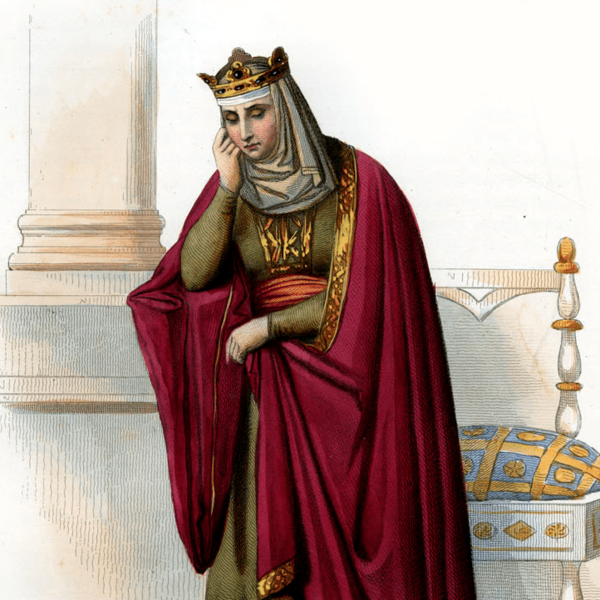
Leave a Reply